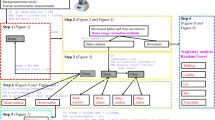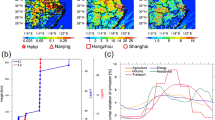Abstract
Nowadays, the advancement of mobile technology in conjunction with the introduction of the concept of exposome has provided new dynamics to the exposure studies. Since the addressing of health outcomes related to environmental stressors is crucial, the improvement of exposure assessment methodology is of paramount importance. Towards this aim, a pilot study was carried out in the two major cities of Greece (Athens, Thessaloniki), investigating the applicability of commercially available fitness monitors and the Moves App for tracking people’s location and activities, as well as for predicting the type of the encountered location, using advanced modeling techniques. Within the frame of the study, 21 individuals were using the Fitbit Flex activity tracker, a temperature logger, and the application Moves App on their smartphones. For the validation of the above equipment, participants were also carrying an Actigraph (activity sensor) and a GPS device. The data collected from Fitbit Flex, the temperature logger, and the GPS (speed) were used as input parameters in an Artificial Neural Network (ANN) model for predicting the type of location. Analysis of the data showed that the Moves App tends to underestimate the daily steps counts in comparison with Fitbit Flex and Actigraph, respectively, while Moves App predicted the movement trajectory of an individual with reasonable accuracy, compared to a dedicated GPS. Finally, the encountered location was successfully predicted by the ANN in most of the cases.








Similar content being viewed by others
References
Bassett, D. R. (2012). Device-based monitoring in physical activity and public health research. Physiological Measurement, 33, 1769–1783.
Breen, M., Long, T., Schultz, B., Crooks, J., Breen, M., et al. (2014). GPS-based microenvironment tracker (MicroTrac) model to estimate time–location of individuals for air pollution exposure assessments: Model evaluation in central North Carolina. Journal of Exposure Science and Environmental Epidemiology, 24(4), 412–420.
Briggs, D. (2005). The role of GIS: coping with space (and time) in air pollution exposure assessment. Journal of Toxicology and Environmental Health Part A, 68, 1243–1261.
Darwish, A., & Hassanien, A. E. (2011). Wearable and implantable wireless sensor network solutions for healthcare monitoring. Sensors, 11, 5561–5595.
Dennis, J.E., & Schnabel, R.B. (1983). Numerical methods for unconstrained optimization and nonlinear equations, Prentice-Hall, Inc.: Englewood Cliffs: NJ.
Dueker, D., Taher, M., Wilson, J., & McConnell, R. (2014). Evaluating children’s location using a personal GPS logging instrument: limitations and lessons learned. Journal of Exposure Science and Environmental Epidemiology, 24, 244–252.
Foresee, F.D. & Hagan, M.T. (1997). Gauss-Newton approximation to Bayesian regularization. In Proceedings of the IJCNN ‘97 (pp. 1930–1935). Piscataway, NJ.
Guo, F., Li, Y., Kankanhalli, M.S., Brown, M.S. (2013). An evaluation of wearable activity monitoring devices, in: Proceedings of the 1st ACM International Workshop on Personal Data Meets Distributed Multimedia, PDM ‘13 (pp. 31–34). ACM, New York.
Gusmer, R. J., Bosch, T. A., Watkins, A. N., Ostrem, J. D., & Dengel, D. R. (2014). Comparison of FitBit® ultra to ActiGraph™ GT1M for assessment of physical activity in young adults during treadmill walking. Open Sports Medicine Journal, 8, 11–15.
Hagan, M. T., & Menhaj, M. (1995). Training feedforward networks with the Marquardt algorithm. IEEE Transactions on Neural Networks, 5, 989–993.
Jantunen, M. J., Hänninen, O., Katsouyanni, K., Knöppel, H., Kuenzli, N., Lebret, E., Maroni, M., Saarela, K., Srám, R., & Zmirou, D. (1998). Air pollution exposure in European cities: the ‘EXPOLIS’ study. Journal of Exposure Analysis and Environmental Epidemiology, 8, 495–518.
Karakitsios, S. P., Papaloukas, C. L., Kassomenos, P. A., & Pilidis, G. A. (2006). Assessment and prediction of benzene concentrations in a street canyon using artificial neural networks and deterministic models: their response to “what if” scenarios. Ecological Modelling, 193, 253–270.
Karakitsios, S., Asikainen, A., Garden, C., Semple, S., Brouwere, K. D., Galea, K. S., Sánchez-Jiménez, A., Gotti, A., Jantunen, M., & Sarigiannis, D. (2014). Integrated exposure for risk assessment in indoor environments based on a review of concentration data on airborne chemical pollutants in domestic environments in Europe. Indoor and Built Environment, 24, 1110–1146.
Kaufman, A., Williams, R. Hunt, S., French, R., Wilson, H., Hagler, G., Vasu Kilaru, Fine, P., Katz, S., Robarge, G., Renwick, D. (2015). Highlights from the Air Sensors 2014 Workshop. Em: air and waste management associations magazine for environmental managers. Air & Waste Management Association, Pittsburgh, PA, 34–39.
Kleipeis, N. E. (1999). An introduction to the indirect exposure assessment approach: modeling human exposure using microenvironmental measurements and the recent National Human Activity Pattern Survey. Environmental Health Perspectives, 107, 365–374.
Mammen, G., Gardiner, S., Senthinathan, A., McClemont, L., Stone, M., & Faulkner, G. (2012). Is this bit fit? Measuring the quality of the Fitbit step-counter. Health and Fitness Journal of Canada, 5, 30–39.
Moller, M. F. (1993). A scaled conjugate gradient algorithm for fast supervised learning. Neural Networks, 6, 525–533.
de Nazelle, A., Seto, E., Donaire-Gonzalez, D., Mendez, M., Matamala, M., Nieuwenhuijsen, M., & Jerrett, M. (2013). Improving estimates of air pollution exposure through ubiquitous sensing technologies. Environmental Pollution, 176, 92–99.
Nethery, E., Mallach, G., Rainham, D., Goldberg, M., & Wheeler. (2014). Using global positioning system (GPS) and temperature data to generate time-activity classifications for estimating personal exposure in air monitoring studies: an automated method. Environmental Ηealth, 13, 33.
Noah, J., Spierer, D. K., Gu, J., & Bronner, S. (2013). Comparison of steps and energy expenditure assessment in adults of Fitbit Tracker and Ultra to the Actical and indirect calorimetry. Journal of Medical Engineering and Technology, 37, 456–462.
Phillips, M., Hall, T., Esmen, N., Lynch, R., & Johnson, H. (2011). Use of global positioning system technology to track subject’s location during environmental exposure sampling. Journal of Exposure Analysis and Environmental Epidemiology, 11, 207–215.
Riedmiller, M., & Braun, H. (1993). A direct adaptive method for faster backpropagation learning: The RPROP algorithm. San Francisco: Proc. IEEE ICNN.
Sarigiannis, D. A., Karakitsios, S. P., Gotti, A., Papaloukas, C. L., Kassomenos, P. A., & Pilidis, G. A. (2009). Bayesian algorithm implementation in a real time exposure assessment model on benzene with calculation of associated cancer risks. Sensors, 9, 731–755.
Sarigiannis, D. A., Karakitsios, S. P., Antonakopoulou, M. P., & Gotti, A. (2012). Exposure analysis of accidental release of mercury from compact fluorescent lamps (CFLs). Science of the Total Environment, 435–436, 306–315.
Schweizer, C., Edwards, R. D., Bayer-Oglesby, L., Gauderman, W. J., Ilacqua, V., & Briggs, D. (2005). The role of GIS: coping with space (and time) in air pollution exposure assessment. Journal of Toxicology and Environmental Health Part A, 68, 1243–1261.
Steinle, S., Reis, S., & Sabel, C. E. (2012). Quantifying human exposure to air pollution—moving from static monitoring to spatio-temporally resolved personal exposure assessment. Science of the Total Environment, 443C(null), 184–193.
de Vries, S. I., Bakker, I., Hopman-Rock, M., Hirasing, R. A., & van Mechelen, W. (2006). Clinimetric review of motion sensors in children and adolescents. Journal of Clinical Epidemiology, 59, 670–680.
Wild, C. P. (2005). Complementing the genome with an ‘exposome’: the outstanding challenge of environmental exposure measurement in molecular epidemiology. Cancer Epidemiology, Biomarkers and Prevention, 14, 1847–1850.
Wild, C. P. (2009). Environmental exposure measurement in cancer epidemiology. Mutagenesis, 24, 117–125.
Wild, C. P. (2011). Future research perspectives on environment and health: the requirement for a more expansive concept of translational cancer research. Environmental Health, 10(Suppl 1), S15.
Wild, C. P. (2012). The exposome: from concept to utility. International Journal of Epidemiology, 41, 24–32.
Wu, J., Jiang, C., Houston, D., Baker, D., & Delfino, R. (2011). Automated time activity classification based on global positioning system (GPS) tracking data. Environmental Health, 10, 101.
Yang, C.-C., & Hsu, Y.-L. (2010). A review of accelerometry-based wearable motion detectors for physical activity monitoring. Sensors, 10, 7772–7788.
Acknowledgements
This work has received funding from the European Union’s Seventh Programme for Research, Technological Development and Demonstration under grant agreement no. 603946 (Health and Environment-wide Associations via Large population Surveys-HEALS).
Author information
Authors and Affiliations
Corresponding author
Ethics declarations
Ethical approval was obtained from the Institutional review board of National Center for Scientific Research “Demokritos” (NCSRD).
Rights and permissions
About this article
Cite this article
Asimina, S., Chapizanis, D., Karakitsios, S. et al. Assessing and enhancing the utility of low-cost activity and location sensors for exposure studies. Environ Monit Assess 190, 155 (2018). https://doi.org/10.1007/s10661-018-6537-2
Received:
Accepted:
Published:
DOI: https://doi.org/10.1007/s10661-018-6537-2




